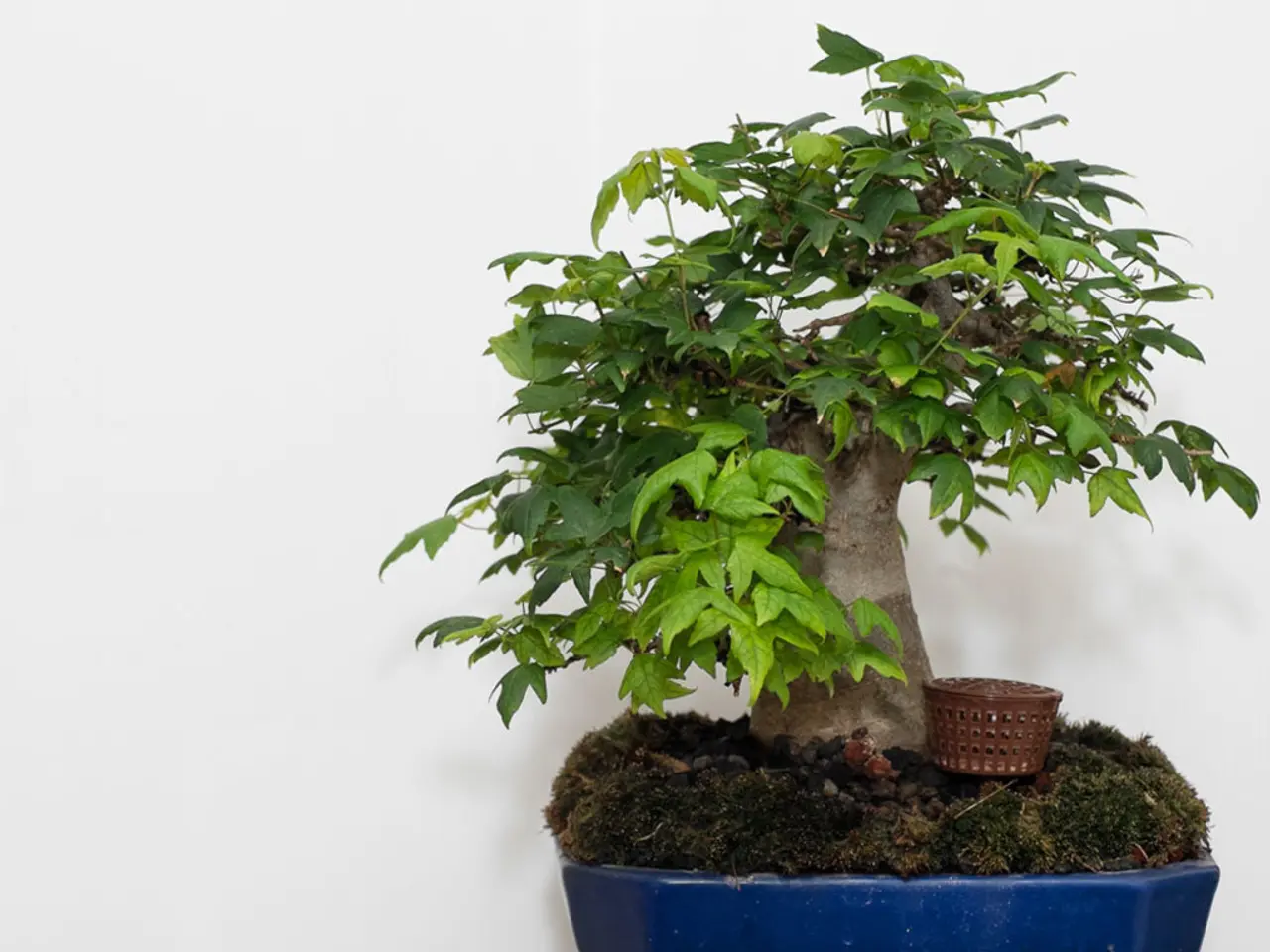Bonsai Plant Multiplication in Greenhouses: Designing an Optimal Growth Setting
In the world of bonsai cultivation, creating the perfect environment is essential for successful propagation. Greenhouses offer a controlled setting that allows for the replication of natural conditions, promoting healthy root and shoot development.
Temperature is one of the key factors to consider. Most indoor bonsai species, such as the ginseng ficus, thrive when daytime temperatures are consistently above 60°F (about 16°C). Maintaining a steady room temperature without extreme fluctuations is important for indoor bonsai. In greenhouse propagation, temperatures often range between 65°F and 75°F (18°C to 24°C) to promote root growth without stressing the plants.
Humidity is another crucial element. Bonsai propagation needs a humid environment to prevent cutting desiccation and encourage root development. The ginseng ficus bonsai specifically thrives in humidity but can tolerate low humidity due to its leaf surface. Maintaining humidity levels around 60-80% RH in the greenhouse is beneficial for most bonsai species during propagation.
Light is also vital. Bonsai propagation prefers bright, indirect light rather than direct harsh sunlight, which can dry out cuttings or stressed young plants. An ideal exposure is 6 to 8 hours of bright, indirect sun daily. If natural light is insufficient, LED grow lights are recommended as they provide adequate light intensity without generating excessive heat, helping to maintain optimal temperature and humidity simultaneously.
By carefully controlling these environmental parameters, greenhouse bonsai propagation can be greatly optimized for strong, healthy plants. A well-designed watering system is crucial in a greenhouse setting, ensuring consistent moisture levels and promoting healthy root development in bonsai plants.
Additional tips include avoiding watering bonsai to the point of soggy soil, maintaining good air circulation within the greenhouse to prevent mold but avoid drying out the cuttings, and fertilization is not typically necessary during propagation but important after roots develop.
Here's a summary table of the optimal ranges for temperature, humidity, and light in greenhouse bonsai cultivation:
| Factor | Optimal Range/Condition | Notes | |------------|---------------------------------------------|------------------------------------------| | Temperature| 65°F to 75°F (18°C to 24°C) | Avoid frost and temperature swings | | Humidity | 60-80% Relative Humidity | Use humidifiers/misting to maintain | | Light | 6-8 hours bright, indirect sunlight or LED grow lights | Avoid direct harsh sun; avoid shade |
Mechanical ventilation systems offer an efficient means of augmenting natural air exchange, ensuring a consistent and controlled flow of air within the greenhouse to promote ideal bonsai growth and health. Roof vents allow hot air to escape, creating a gentle circulation of air that promotes healthy growth. Automated irrigation systems utilize sensors and timers to deliver precise amounts of water at set intervals, eliminating the risk of human error.
Rotating bonsai trees every 1-2 weeks promotes balanced root development and prevents uneven exposure to light, temperature, and humidity. Automated systems can be integrated to monitor and maintain the greenhouse environment, utilizing sensors, timers, and controllers to regulate temperature, humidity, and light levels, ensuring ideal conditions for bonsai growth and propagation.
Greenhouses can be constructed from various materials, such as glass, polycarbonate, and polyethylene, each with their own unique characteristics and suitability for specific climate zones and bonsai species. Essential equipment for climate control includes heating systems, cooling systems, humidity controllers, ventilation systems, and lighting systems.
By following these guidelines, growers can create the perfect environment for their bonsai propagation needs, fostering strong, healthy plants.
In the process of bonsai propagation, maintaining a humid environment is important, as it prevents cutting desiccation and encourages root development, with ideal humidity levels around 60-80% RH in the greenhouse. Additionally, the lifestyle sector, such as home-and-garden enthusiasts interested in gardening, might find environmental-science knowledge like this useful in their endeavors to create a thriving bonsai environment.




